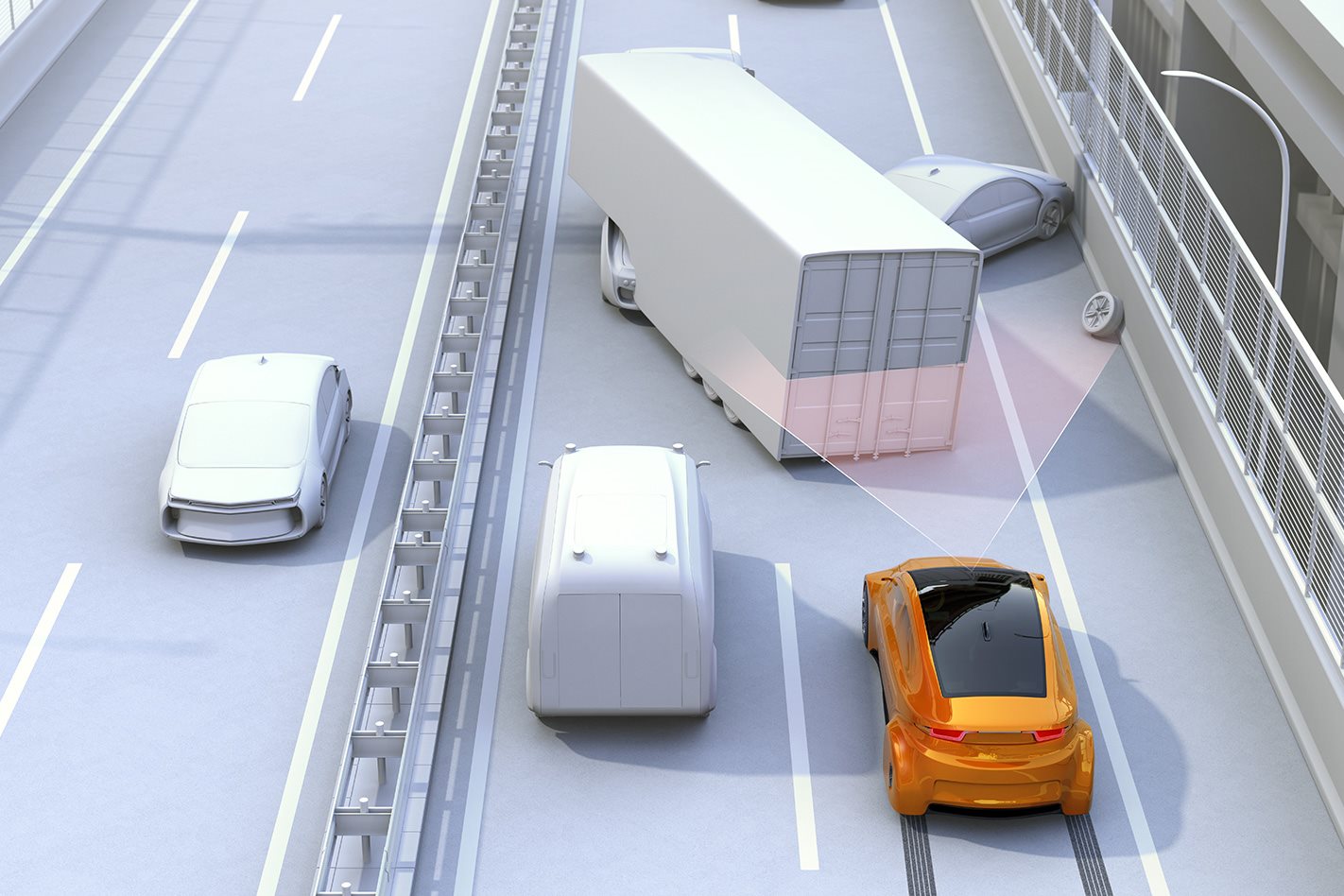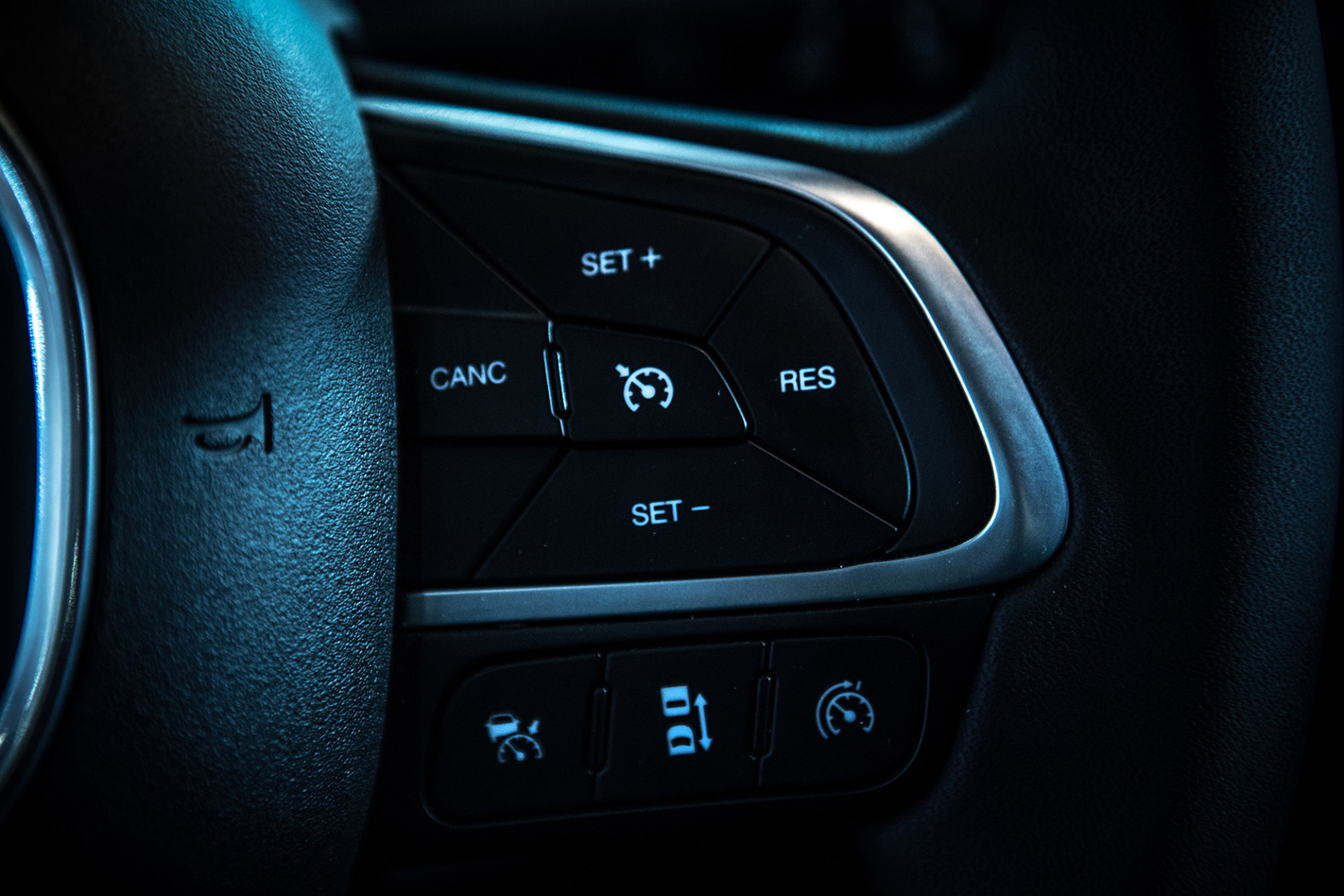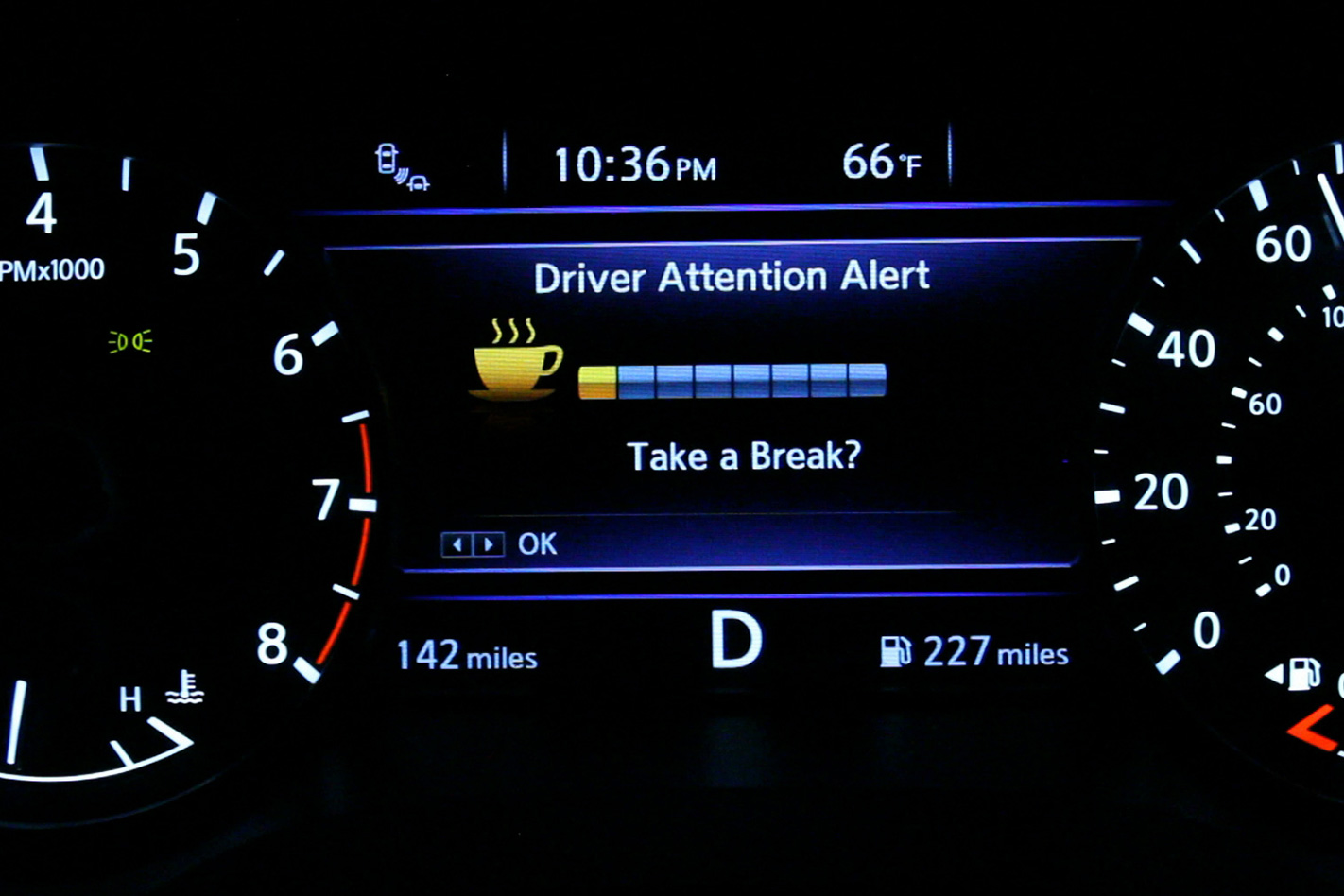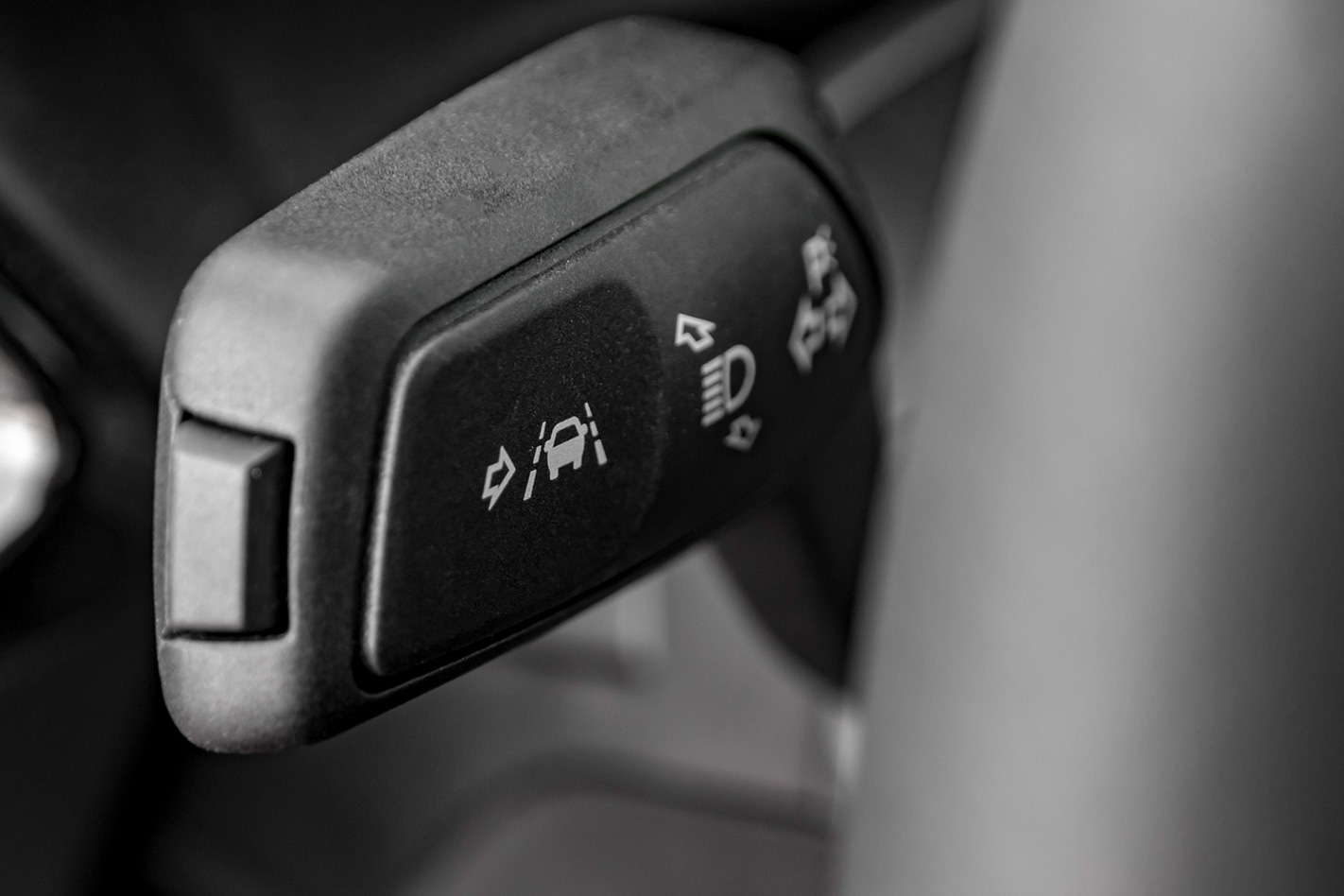
Now, more than ever, the price of life-saving technology in new cars has never been more affordable… but what do all those acronyms actually mean?
Potentially life-saving active safety features are increasingly becoming standard equipment on even the most affordable cars. Autonomous emergency braking (AEB) is the most significant, but there are a host of other features that combine to create a virtual shield around your car.
Here’s a list of key active safety and driver-assist features currently available in mainstream vehicles that are well worth considering when buying a new car. The list includes their generic names.
Adaptive Cruise Control
Also known as active cruise control, this system uses camera- or radar-based sensors to slow and maintain your vehicle’s speed based on the speed of the vehicle preceding it.

Most systems operate from minimum speeds of about 30km/h, but more advanced systems offer ‘traffic stop & go’ that automatically stops and start your car in traffic-heavy traffic behind the vehicle in front.
Adaptive cruise control systems are usually based on radar or LIDAR (laser-based radar) systems mounted in the grille, though Subaru’s EyeSight system uses a pair of forward-facing stereo cameras in the windscreen. Many adaptive systems don’t work well in heavy rain or fog, as they are unable to ‘see’ the vehicle in front.
More advanced adaptive cruise control systems have a Stop & Go function that works in heavy traffic and brings the vehicle to stop and then moves forward with the vehicle in front. Often called Smart Cruise Control, it helps reduce fatigue and frustration during a traffic jam.
Autonomous Emergency Braking (AEB)
AEB is the key active safety feature that any car you’re looking to buy should have. It uses camera- or radar-based sensors to judge closing speeds between vehicles, and will autonomously apply the brakes if there’s no driver response within a prescribed time.
AEB comes in five categories:
- Low or city speed, which detects other vehicles in front of your car to prevent relatively minor crashes;
- High or freeway speed, which scans up to 200 metres ahead using long-range radar to prevent or mitigate a high-speed collision.
- Pedestrian braking, which detects pedestrians – and in some cases cyclists – to prevent a collision;
- Reverse AEB works at low speeds when parking and will stop to prevent your vehicle hitting an obstacle or person.
- Junction AEB, which detects a vehicle entering the road from the side and applies the brakes prevent a side collision.
Blind Spot Monitor
This radar-based system can detect a vehicle approaching from behind in your blind spot over your shoulder, and displays an amber or red light in the door mirror on the corresponding side. More advanced systems can audibly warn the driver should they try and change lanes, while highly advanced versions are able to prevent the lane change from even happening.
As radar systems improve, blind spot monitors can detect obstacles approaching from behind at high speeds and from longer distances, giving you more chance to avoid a potential lane-change crash.
Cross Traffic Alert
This system detects vehicles, cyclists or pedestrians coming from the left or right side of the vehicle. This is mostly fitted to vehicles to help detect a threat while reversing and is called rear-cross traffic alert, while forward-cross traffic alert is becoming more common.
Fatigue Detector

The most common fatigue detectors can monitor the driver’s inputs on the accelerator and steering wheel, as well as measuring the amount of time spent behind the wheel, looking for abnormal behaviour that may indicate drowsiness. If the car thinks you’re driving erratically, it will sound an alarm and flash a message to you, suggesting you take five.
The latest version of Subaru’s EyeSight system even uses facial recognition to detect if your eyes are open, and will warn you to pay attention or take a break from driving. As a nice addition, the system can recognise up to five drivers, and will change your seating and mirror position to suit.
Forward Collision Warning
Like AEB, this uses radar- or camera-based sensors to monitor the closing speed between your car and vehicles, objects or pedestrians ahead to alert you of an impending collision. If it detects a potential collision, it warns the driver via an audible alert and flashing light on the dashboard, or projected on to the windscreen. This shouldn’t be confused with AEB, though – forward collision detection merely warns you, but it won’t brake for you.
Intelligent Speed Assist
ISA is a safety technology that uses GPS mapping data to identify a posted speed limit to alert you if you exceed the speed limit. It can also combine with the car’s adaptive cruise control system to match the car’s speed to the relevant speed limit.
Lane Departure Alert
Uses a downwards-facing camera on the door mirrors to recognise lane markings, and sounds a warning or vibrates the steering wheel – or, in the case of cars like the Holden Acadia, a physical shaking of the driver’s seat – should the car stray over the line marking. It works on both centre and side lines.
Lane Keeping Assist

Lane-keeping assist builds on the lane departure alert system by gently steering the vehicle back within its lane and guiding back between the lines if you have begun to drift along the highway. It doesn’t override your steering input, though, and will disable itself if you keep your hands off the wheel for a pre-determined time to prevent it being used as an autopilot.
Mercedes-Benz as a more advanced system called Active Steering Assist that follows the car ahead or referencing road edges or structures such as bollards should there be no lines on the road.
Lateral Side Assist
This detects vehicles approaching diagonally from another lane from the front and rear and alerts the driver as with cross-traffic alert. Some systems will also steer the car away from another vehicle entering your lane when safe to do so.
Pre-crash Safety System
Detects an imminent crash and deploys safety devices to help minimise the result of the impact such as seat belt pre-tensioners. Some vehicles will even close the windows to prevent occupants from being ejected and adjust the seats to ensure maximum airbag protection. The system works by using sensors, as with AEB, or simply when the driver takes sudden evasive action such as hard braking or swerving.
Traffic-Sign Assist
Uses a camera to read speed signs to let you know speed-limit information and warn you when you’re going too fast. In some vehicles, like the Holden Acadia, this can be used in conjunction with the speed limiter so your car won’t travel faster than the speed limit.




